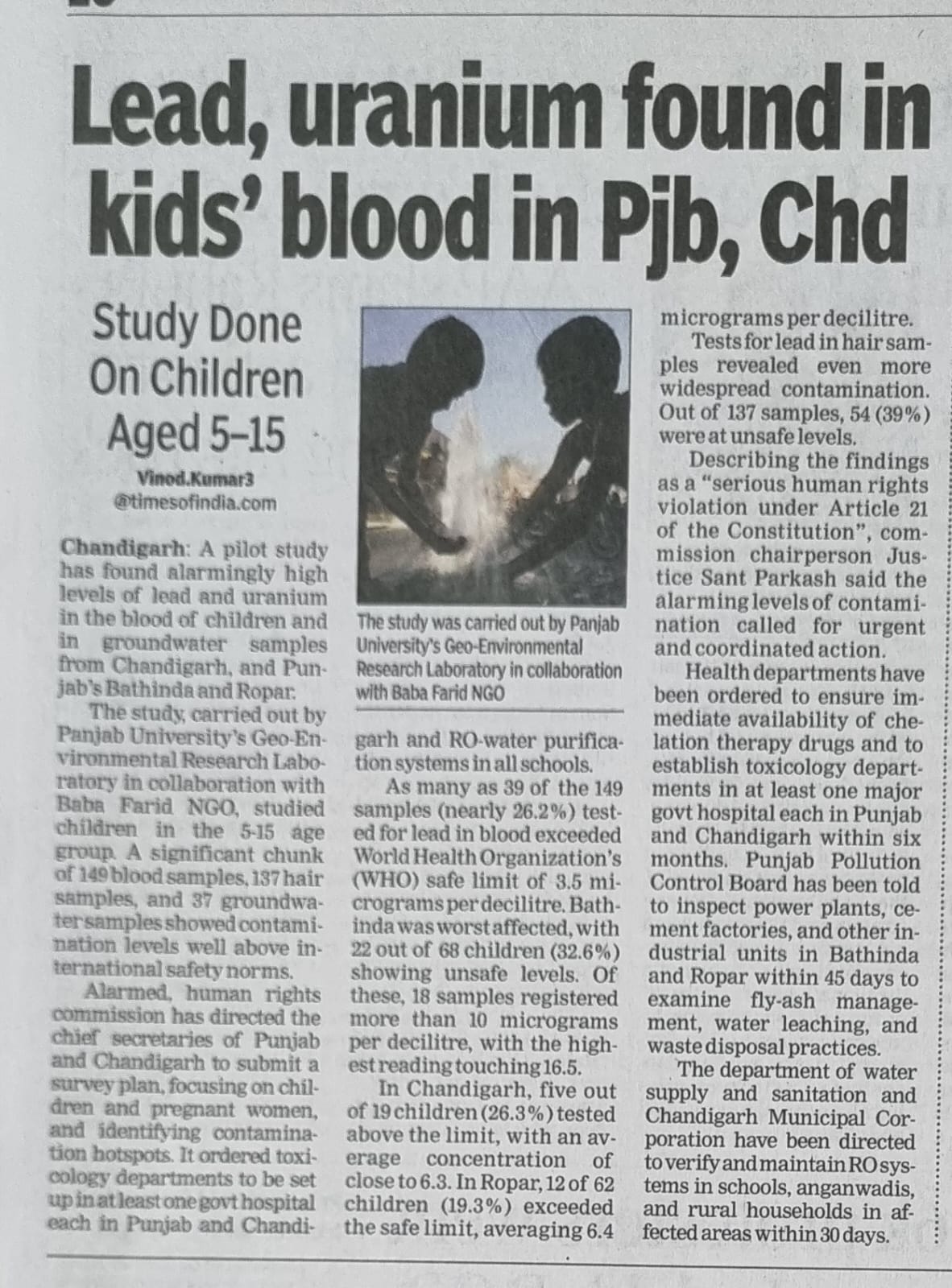Source: Times of India (Vinod Kumar, Chandigarh Bureau)
A recent pilot study has uncovered alarming levels of lead and uranium in the blood of children, as well as in groundwater across Chandigarh, Bathinda, and Ropar. The findings highlight a potential public health crisis, particularly affecting children aged 5 to 15 years.
The Study at a Glance
The research was conducted by Panjab University’s Geo-Environmental Research Laboratory in collaboration with Baba Farid NGO.
-
Samples Studied:
-
149 blood samples (children aged 5–15)
-
137 hair samples
-
37 groundwater samples
-
-
Findings: Contamination levels in many cases were well above international safety norms.
Key Findings
-
Blood Lead Levels
-
WHO safe limit: 3.5 micrograms per decilitre.
-
Bathinda: 22 out of 68 children (32.6%) had unsafe levels.
-
18 samples crossed 10 micrograms per decilitre.
-
Highest reading: 16.5 micrograms per decilitre.
-
-
Chandigarh: 5 out of 19 children (26.3%) above safe limit.
-
Average: 6.3 micrograms per decilitre.
-
-
Ropar: 12 out of 62 children (19.3%) above safe limit.
-
Average: 6.4 micrograms per decilitre.
-
-
-
Hair Samples
-
Out of 137 hair samples, 54 (39%) showed unsafe levels of lead.
-
Indicates even more widespread contamination.
-
-
Groundwater Samples
-
37 samples revealed contamination, pointing to a larger environmental issue impacting communities.
-
Human Rights & Government Response
The Human Rights Commission described this as a “serious human rights violation under Article 21 of the Constitution”.
Immediate Actions Ordered:
-
Health Departments:
-
Ensure availability of chelation therapy drugs.
-
Establish toxicology departments in at least one major hospital in both Punjab and Chandigarh within six months.
-
-
Pollution Control Board:
-
Inspect power plants, cement factories, and other industrial units in Bathinda and Ropar within 45 days.
-
Examine fly-ash management, water leaching, and waste disposal practices.
-
-
Water Supply & Sanitation Departments:
-
Verify and maintain RO systems in schools, anganwadis, and rural households.
-
Timeline: within 30 days.
-
Why This Matters
Exposure to lead and uranium in children can result in:
-
Cognitive and developmental delays
-
Neurological damage
-
Behavioral disorders
-
Long-term health complications
The situation demands urgent attention, not only for immediate treatment but also for systematic environmental clean-up and monitoring.
This study serves as a wake-up call for policymakers, health departments, and citizens alike. Protecting children from toxic exposure should be treated as a public health emergency.
Source Credit: Times of India, Report by Vinod Kumar.








2 Comments
John Doe
Posted on: March 13, 2025Leverage agile frameworks to provide a robust synopsis for high level overviews. Iterative approaches to corporate strategy foster collaborative thinking to further the overall value proposition.
John Doe
Posted on: March 13, 2025Leverage agile frameworks to provide a robust synopsis for high level overviews. Iterative approaches